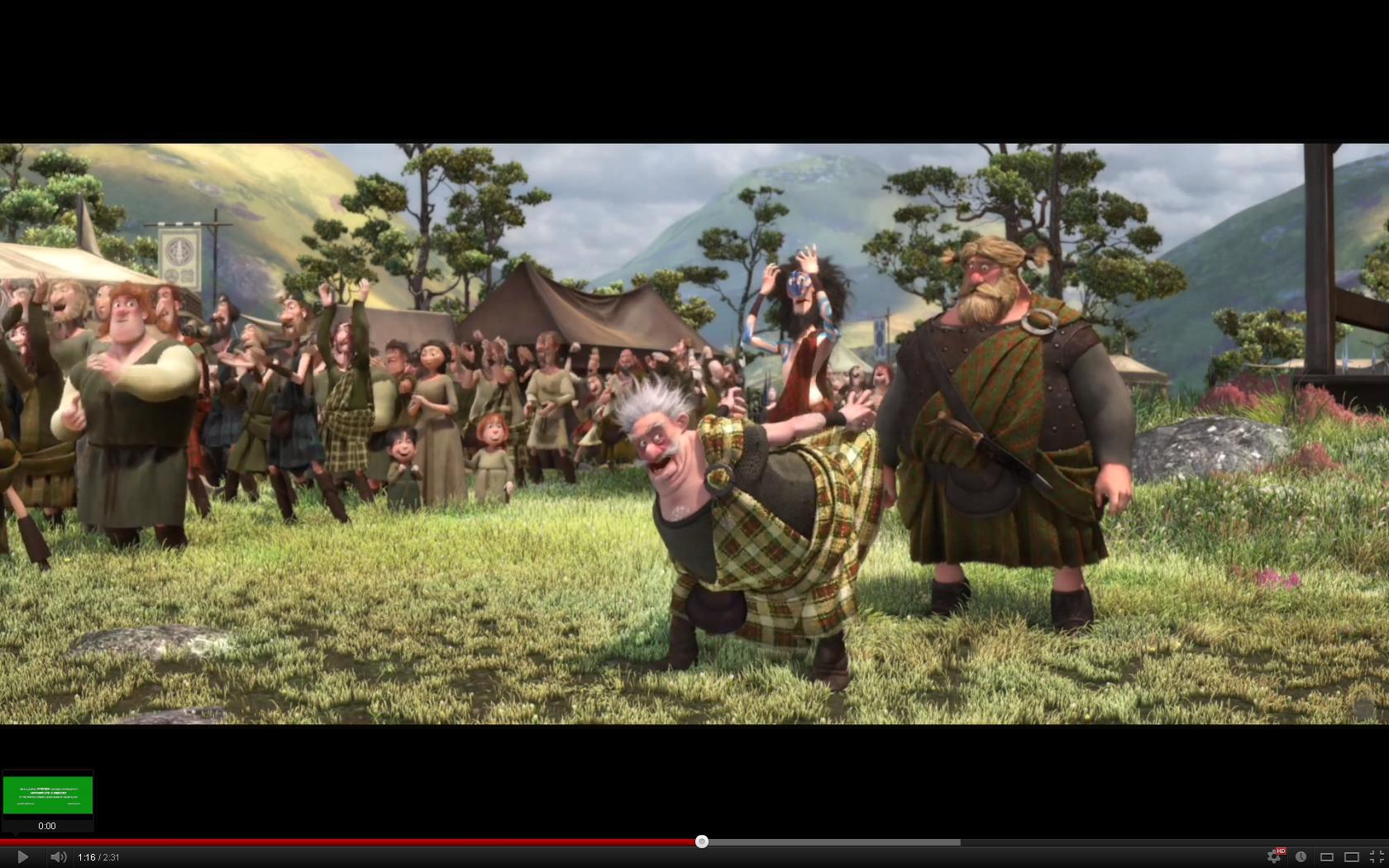After the clumsy suitor Wee Dingwall strikes a surprising bull’s-eye in the new Pixar movie Brave, his father gloats over the victory in an unusual but familiar way: He puts his back to his enemies and lifts up his kilt. In Braveheart, another movie set in Scotland during the Middle Ages—Braveheart is set in the 13th century, while Brave is set in the 10th or 11th century—hundreds of Scottish warriors moon their British enemies from across the battlefield. Did Europeans really moon each other in the Middle Ages?
Yes. Some sources have cited mooning—baring one’s butt at another as an insult—as a phenomenon stretching all the way back to the Romans, but the gesture as we know it today seems to have started in the Middle Ages. Wikipedia claims that the first known instance of mooning was recorded by the famous Roman-Jewish historian Josephus in the 1st century A.D. According to Josephus’ account in The Wars of the Jews, a Roman soldier bared his rear to an audience of Jews celebrating Passover, and thereby incited a furious riot that killed “upwards of thirty thousand.” However, a closer examination of Josephus’s account shows that the soldier was not mooning the crowd, but rather farting in their general direction. Josephus puts it more delicately: “One of the soldiers, raising his robe, stooped in an indecent attitude, so as to turn his backside to the Jews, and made a noise in keeping with his posture.”
There is ample evidence that people mooned each other during the Middle Ages. One of the earliest known instances of mooning happened during the Fourth Crusade around 1203, when Western Europeans attempted to take Constantinople. As the crusaders’ ships pulled away after the failed attack, the Byzantines hooted and hollered and “showed their bare buttocks in derision to the fleeing foe.” Another account tells of the Italian nobleman and troubadour Alberico da Romano, who in the first half of the 13th century was so indignant at losing his favorite falcon during a hunt that he “dropped his trousers and exposed his rear to the Lord as a sign of abuse and reviling.” Many gargoyles of the late Middle ages are also posed in a posture that looks like mooning, though others describe them as “defecating gargoyles.” In the “Miller’s Tale,” from Geoffrey Chaucer’s late 14th-century collection The Canterbury Tales, the characters Alison and Nicholas trick Absolon into kissing their asses, though this gesture too is not quite the same as a mooning. (In fact, the insult is once again completed with a fart: Chaucer tells how Nicholas “let fly a fart / As great as if it had been a thunderclap / So that [Absolon] was almost blinded by the blast.”)
If the gesture was employed on the battlefield between the English and Scots, as in Braveheart, the mooning may have been taken place the other way around. The University of York professor Nicola McDonald points out that, according to the chronicle of the 13th century historian Peter Langtoft, it was the English who used mooning to insult the Scots.
By the early 1500s, mooning had come to the Americas. On his explorations of the Atlantic coast of North America, the Italian explorer Giovannia da Verrazzano was mooned by the cagey Abenaki tribe of Maine, who after a trade of goods began “showing their buttocks and laughing.” In his acclaimed book 1491, the journalist Charles C. Mann uses the encounter to suggest that the Abenaki had been burned by Europeans before.
By the 19th century, mooning seems to have spread to the other side of the globe. Oral tradition in New Zealand recalls the Maori gesture of whakapohane, in which an East Coast elder would flip up her skirt at an elder of another region in “a deliberate act of exposure … [that] conveyed the utmost form of insult.” Whakapohane would make headlines a century later in 1986 when a Maori activist placed an image of a Maori man baring his buttocks on the side of his van and tried to join Queen Elizabeth’s motorcade. The activist described the gesture as part of the tradition of whakapohane, though the driver of the Queen’s limousine assured reporters that the Queen did not see the vulgar incident.
Though it was a worldwide phenomenon by the 19th century, mooning didn’t get its name until the 1960s. The Oxford English Dictionary dates moon and mooning to student slang of the 1960s, when the gesture became increasingly popular at American universities. The term derives from the use of moon or moons as slang for the bare buttocks, a usage that dates back as far as the 18th century. The OED says that in 1756 one author declared of another man’s butt that “his Moon shall never be covered by me or Buck.” (The dictionary also notes that in James Joyce’s Ulysses Leopold Bloom imagines women with “their skirt behind, placket unhooked. Glimpses of the moon.”) One of the first descriptions of mooning comes from a 1963 issue of the American magazine Look, which described “a game called mooning.” According to the magazine, said game “originated about two years ago in southern California.” Of course, by 1963 the gesture was much older than that.
Thanks to David Levenson of Florida State University, Jesse Sheidlower of the Oxford English Dictionary, and Ben Zimmer of the Visual Thesaurus and Vocabulary.com.
